#marine engineering institute
Explore tagged Tumblr posts
Text
Charting Careers: Exploring Maritime Training Institute in India
Introduction –
In the vast expanse of the maritime industry, where opportunities stretch as far as the horizon, finding the right path can be like navigating uncharted waters. This is where a reputable Maritime Training Institute in India becomes the guiding star for aspiring mariners, offering a beacon of knowledge, information, skills, and opportunities.
The School of Maritime Studies at Centurion University is the right educational institution for individuals wishing to pursue a career in the maritime industry. Explore the world of the Indian Maritime Training Institute at the School of Maritime Studies, where careers are built and dreams come true.

1) Understanding the Importance of Maritime Training Institute in India –
The maritime industry is a dynamic and diverse field, encompassing everything from shipping and logistics to offshore exploration and marine engineering. As a nation with a rich maritime history and a significant presence in the global shipping industry, India recognizes the importance of nurturing skilled maritime professionals.
A reputable institute like the School of Maritime Studies at Centurion University not only imparts theoretical knowledge but also provides hands-on training and industry exposure, preparing students for the challenges of a career at sea. . This institute serves as lighthouses guiding students through the complex waters of the maritime world, equipping them with the skills and knowledge needed to navigate their careers successfully.
2) The School of Maritime Studies: A Pillar of Excellence in Maritime Education –
One of the leading names in maritime education is in India is the School of Maritime Studies at Centurion University. Renowned for its commitment to quality education, excellence and practical training this institution has earned its reputation as a premier Maritime Training Institute in India, shaping the future of mariners for years.
Through a combination of comprehensive curriculum, state-of-the-art facilities, experienced faculty, and industry collaborations, the School of Maritime Studies provides students with a holistic learning experience that covers all aspects of maritime education. From navigation and ship operations to safety protocols and industry regulations, the institute ensures that graduates are well-prepared for the challenges of the maritime industry.
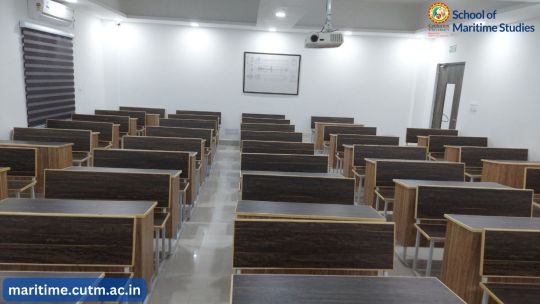
3) Centurion University: Fostering Maritime Talent –
As a prominent player in the field of higher education, the School of Maritime Studies at Centurion University recognizes the importance of maritime education in India's growth as a maritime nation. The university prepares aspiring mariners not just for jobs but for fulfilling and rewarding careers in the maritime sector.
Through its Maritime Training Institute in India, the School of Maritime Studies at Centurion University focuses on experiential learning and industry collaboration, offering a range of programs tailored to meet the diverse needs of the industry. From diploma courses in nautical science to degree programs in marine engineering, the university provides students with the tools they need to thrive in the competitive maritime landscape. The university's state-of-the-art facilities and experienced faculty further enhance the learning experience, making it a preferred choice among maritime aspirants.
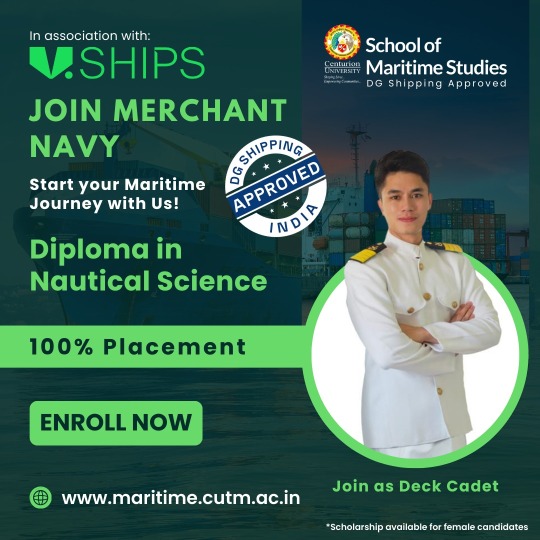
4) Maritime Education: A Gateway to Success –
For those considering a career in the maritime industry, investing in quality education is the first step towards success. A Maritime Training Institute in India like the School of Maritime Studies at Centurion University offers the perfect blend of academic rigor and practical training, setting students on the path to a fulfilling career at sea.
The School of Maritime Studies, Centurion University integrates classroom instruction with real-world simulations and on-the-job training opportunities. Through a combination of classroom lectures, hands-on exercises, and industry internships, students gain a comprehensive understanding of the maritime sector and develop the necessary skills to excel in their chosen field.

Whether aspiring to be deck officers, marine engineers, or naval architects, the institute provides the necessary tools and resources to turn aspirations into reality. Students have access to ship simulators, engine rooms, and training vessels, where they can apply their theoretical knowledge in practical scenarios. This hands-on approach not only enhances learning but also prepares students for the challenges they will face in their future careers.
5) Industry Collaboration: Bridging the Gap –
One of the hallmarks of a reputable Maritime Training Institute in India is its collaboration with the industry. Through strong partnerships with leading shipping companies, port authorities, maritime organizations, and research institutions, institutes like the School of Maritime Studies at Centurion University ensure that their curriculum remains relevant and up-to-date with industry standards.
These partnerships provide students with valuable insights into industry trends, practices, and technologies. By bridging the gap between education and employment, these collaborations also open doors to internships, job placements, and networking opportunities, giving students a head start in their maritime careers.
Conclusion –
As the maritime industry continues to evolve, the demand for skilled professionals is on the rise. A quality education from a reputable Maritime Training Institute in India like the School of Maritime Studies at Centurion University is the key to unlocking a world of opportunities in this dynamic field. By providing a blend of academic excellence, practical training, industry collaboration, and global exposure, these institutes empower aspiring mariners to chart their course towards a successful and fulfilling career at sea.
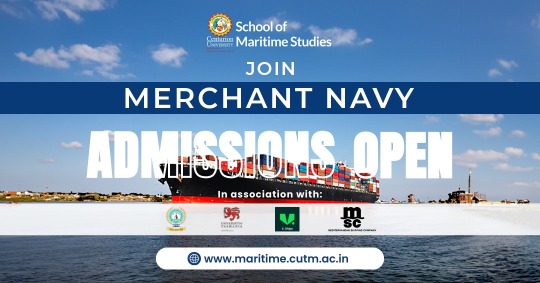
#Maritime Training Institute in India#School of Maritime Studies#Centurion University#maritime industry#maritime education#marine engineering
3 notes
·
View notes
Text

Looking to pursue a career in Marine Engineering? Dehradun is home to some of the top Marine Engineering Colleges that provide cutting-edge education and training. These colleges offer programs designed to prepare students for a successful career in the maritime industry, with a focus on Marine Engineering, Nautical Science, and Port Management. With highly qualified faculty, state-of-the-art facilities, and hands-on training, these institutes ensure you gain the skills needed to excel at sea.
For those looking to clear the IMU-CET (Indian Maritime University Common Entrance Test) in Dehradun, several institutes offer specialized coaching to help you prepare for this important exam. The IMU-CET is your gateway to pursuing marine engineering courses at premier maritime universities. With experienced trainers and comprehensive study material, students receive expert guidance to crack the IMU-CET and secure admission in top Marine Engineering and Nautical Science programs.
1 note
·
View note
Text
Maritime Education and Training | Maritime Education in India - Seacareer.org
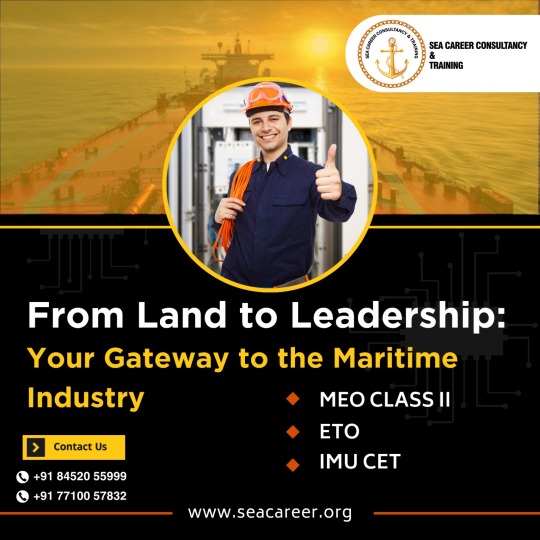
Welcome to Sea Career Consultancy & Training, your gateway to a successful maritime career. As a leading Maritime Training Center in Navi Mumbai, we are dedicated to providing top-notch Maritime Courses and Maritime Education designed to equip you with the skills needed for a thriving career at sea. Our Offerings Include MEO Class II, ETO Course, IMU CET, Maritime Courses, Maritime Education, Nautical Training, Maritime Certification, Seafarer Training, Maritime Institute, Marine Career Opportunities, Ship Training Programs, Deck Officer Training, Engine Room Training, Navigation Courses. At Sea Career Consultancy & Training, we are committed to providing high-quality education and training that opens doors to marine career opportunities. Our expert instructors and state-of-the-art facilities ensure you receive the best possible maritime training. For more information on our programs and to start your journey in maritime excellence, visit our website or contact us today.
#MEO Class II#ETO Course#IMU CET#Maritime Training Center in Navi Mumbai#Sea Career#Maritime Courses#Maritime Education#Nautical Training#Maritime Certification#Seafarer Training#Maritime Institute#Marine Career Opportunities#Ship Training Programs#Deck Officer Training#Engine Room Training#Navigation Courses
0 notes
Text
How does climate change impact coral reefs and their ecosystems
Climate change has emerged as a grave and imminent threat to coral reefs and their fragile ecosystems. The devastating impacts of rising sea temperatures, ocean acidification, sea level rise, extreme weather events, and altered ocean circulation have collectively taken a toll on these vital marine habitats. Coral bleaching, in particular, has become a distressing consequence, leading to the widespread loss of vibrant and bio diverse coral colonies.
Climate change has significant and detrimental effects on coral reefs and their ecosystems. The main impacts are as follows:
Coral Bleaching: Rising sea temperatures lead to coral bleaching, a stress response where corals expel their symbiotic algae, turning them white. Without these algae, corals lose their main source of nutrition and become more susceptible to disease and mortality.
Ocean Acidification: Increased carbon dioxide levels in the atmosphere result in higher CO2 concentrations in seawater. This leads to ocean acidification, which hampers coral growth and the ability of some marine organisms to form their calcium carbonate shells and skeletons.
Sea Level Rise: Global warming causes the melting of polar ice and glaciers, leading to rising sea levels. Higher sea levels can cause more frequent and severe coastal flooding, negatively impacting coral reef habitats and nearby coastal communities.
Extreme Weather Events: Climate change contributes to the intensification of tropical storms and cyclones. These events can physically damage coral reefs through wave action and sediment erosion.
Altered Ocean Circulation: Changes in ocean currents and temperature patterns can disrupt the natural distribution of nutrients, affecting the food availability for coral reef organisms.
Species Disruptions: Some species may shift their distribution or migrate to other areas due to changing environmental conditions, potentially disrupting the delicate balance of coral reef ecosystems.
Loss of Biodiversity: Coral reefs support a vast array of marine life. Climate change-induced impacts, such as coral bleaching and habitat degradation, lead to the loss of biodiversity within these ecosystems.
Loss of Coastal Protection: Healthy coral reefs act as natural barriers, protecting coastlines from erosion and storm surges. As reefs degrade, coastal communities become more vulnerable to the impacts of climate-related events.
The combined effects of these climate change impacts pose a serious threat to the health and survival of coral reefs and the countless marine species that depend on them for food, shelter, and protection. Urgent and concerted efforts to mitigate climate change and promote coral reef conservation are essential to safeguard these valuable ecosystems for future generations.
In conclusion, the perilous consequences of climate change on coral reefs and their ecosystems are undeniable. Urgent action is imperative to curb greenhouse gas emissions and limit global warming to prevent further deterioration of these invaluable marine habitats. Conservation efforts must be intensified to promote the recovery and restoration of coral reefs, alongside a broader commitment to sustainable practices and resilient coastal management.
Nations and communities must collaborate on a global scale to protect and preserve coral reefs and the biodiversity they harbor. By fostering environmental consciousness, implementing adaptive strategies, and supporting scientific research, we can strive towards safeguarding these natural wonders for generations to come. The collective responsibility to combat climate change and preserve coral reefs stands as a testament to our commitment to preserving the remarkable beauty and ecological integrity of our planet’s oceans.
HIMT Marine
Discover the ultimate marine adventure with HIMT Marine’s exclusive limited-time offer! Experience the thrill of seafaring through our state-of-the-art maritime training courses, designed to equip you with the skills needed to navigate the open waters. Don’t miss out on this special deal with incredible discounts on select programs. Whether you aspire to become a seasoned captain or a complete marine mastermind, our top-rated preceptors and slice-edge simulator training ensure an extraordinary literacy journey. Enroll now and seize the opportunity to upgrade your career with the best in the industry. Act fast, as this one-time promotion won’t last long. Join us at HIMT Marine and embark on a voyage of knowledge and success in the captivating world of maritime exploration.
#Top 10 Maritime Engineering College#DG Shipping approved institutes for STCW in Chennai#best marine college in chennai#AIGF dg shipping courses in chennai#marine education#marine#maritime
1 note
·
View note
Text
How does climate change impact coral reefs and their ecosystems?
Climate change has emerged as a grave and imminent threat to coral reefs and their fragile ecosystems. The devastating impacts of rising sea temperatures, ocean acidification, sea level rise, extreme weather events, and altered ocean circulation have collectively taken a toll on these vital marine habitats. Coral bleaching, in particular, has become a distressing consequence, leading to the widespread loss of vibrant and bio diverse coral colonies.
Climate change has significant and detrimental effects on coral reefs and their ecosystems. The main impacts are as follows:
Coral Bleaching: Rising sea temperatures lead to coral bleaching, a stress response where corals expel their symbiotic algae, turning them white. Without these algae, corals lose their main source of nutrition and become more susceptible to disease and mortality.
Ocean Acidification: Increased carbon dioxide levels in the atmosphere result in higher CO2 concentrations in seawater. This leads to ocean acidification, which hampers coral growth and the ability of some marine organisms to form their calcium carbonate shells and skeletons.
Sea Level Rise: Global warming causes the melting of polar ice and glaciers, leading to rising sea levels. Higher sea levels can cause more frequent and severe coastal flooding, negatively impacting coral reef habitats and nearby coastal communities.
Extreme Weather Events: Climate change contributes to the intensification of tropical storms and cyclones. These events can physically damage coral reefs through wave action and sediment erosion.
Altered Ocean Circulation: Changes in ocean currents and temperature patterns can disrupt the natural distribution of nutrients, affecting the food availability for coral reef organisms.
Species Disruptions: Some species may shift their distribution or migrate to other areas due to changing environmental conditions, potentially disrupting the delicate balance of coral reef ecosystems.
Loss of Biodiversity: Coral reefs support a vast array of marine life. Climate change-induced impacts, such as coral bleaching and habitat degradation, lead to the loss of biodiversity within these ecosystems.
Loss of Coastal Protection: Healthy coral reefs act as natural barriers, protecting coastlines from erosion and storm surges. As reefs degrade, coastal communities become more vulnerable to the impacts of climate-related events.
The combined effects of these climate change impacts pose a serious threat to the health and survival of coral reefs and the countless marine species that depend on them for food, shelter, and protection. Urgent and concerted efforts to mitigate climate change and promote coral reef conservation are essential to safeguard these valuable ecosystems for future generations.
In conclusion, the perilous consequences of climate change on coral reefs and their ecosystems are undeniable. Urgent action is imperative to curb greenhouse gas emissions and limit global warming to prevent further deterioration of these invaluable marine habitats. Conservation efforts must be intensified to promote the recovery and restoration of coral reefs, alongside a broader commitment to sustainable practices and resilient coastal management.
Nations and communities must collaborate on a global scale to protect and preserve coral reefs and the biodiversity they harbor. By fostering environmental consciousness, implementing adaptive strategies, and supporting scientific research, we can strive towards safeguarding these natural wonders for generations to come. The collective responsibility to combat climate change and preserve coral reefs stands as a testament to our commitment to preserving the remarkable beauty and ecological integrity of our planet's oceans.
HIMT Marine
Discover the ultimate marine adventure with HIMT Marine's exclusive limited-time offer! Experience the thrill of seafaring through our state-of-the-art maritime training courses, designed to equip you with the skills needed to navigate the open waters. Don't miss out on this special deal with incredible discounts on select programs. Whether you aspire to become a seasoned captain or a complete marine mastermind, our top-rated preceptors and slice-edge simulator training ensure an extraordinary literacy journey. Enroll now and seize the opportunity to upgrade your career with the best in the industry. Act fast, as this one-time promotion won't last long. Join us at HIMT Marine and embark on a voyage of knowledge and success in the captivating world of maritime exploration.
#Top 10 Maritime Engineering College#DG Shipping approved institutes for STCW in Chennai#best marine college in chennai#AIGF dg shipping courses in chennai
0 notes
Text
B.Tech marine Engineering | B.Sc Nautical Science | Top marine college - HIMT
Looking for a top-ranked educational institution that offers quality programs and prepares students for successful careers? Look no further than HIMT College! Our state-of-the-art facilities, experienced faculty, and innovative programs in engineering, management, law, and maritime studies set us apart from the competition. As a leading college in Greater Chennai, India, we strive to provide our students with a comprehensive education that equips them with the skills and knowledge they need to succeed. Join the HIMT College community and unlock your potential today!
#btech engineering course in Chennai#Bsc nautical science college in Chennai#Best marine institute#graduate marine engineering course#marine engineering course
1 note
·
View note
Text

Today we're heading into the eternal ice of Antarctica and keeping a special lady company. The beautiful Endurance is waiting for us in door no. 7
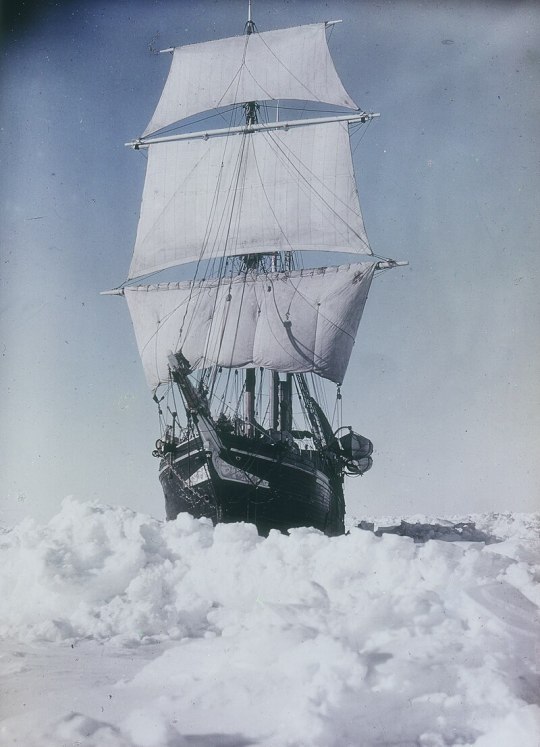
More about her here:
The three-masted schooner barque designed by Ole Aanderud Larsen (1884-1964) was built by the Framnæs shipyard in Sandefjord, Norway. When she was launched on 17 December 1912, she was named Polaris. She was 43.8 m long, 7.62 m wide and weighed 350 tonnes. In addition to square sails on the foremast and gaff sails on the main and mizzen masts, she had a 260 kW steam engine, which allowed a maximum speed of 10 knots (19 km/h). The ship was designed for polar conditions and constructed to minimise the pressure of the ice masses. With a thickness of 28 cm, the frames were made of greenheart wood, a particularly stable type of tropical wood, and were twice as thick as on conventional sailing ships of this size. The hull of the Endurance was designed to be relatively straight-sided, as it was only intended to sail in loose pack ice. She was therefore calmer in the sea than ships with a spherical hull, such as the Fram; however, this came at the cost of not being lifted significantly out of the pressure line in ice pressures and was therefore unsuitable for encasements in pack ice.
The ship was commissioned by the Belgian polar explorer Adrien de Gerlache and the Norwegian whaling magnate Lars Christensen, who actually wanted to use it for polar cruises of a more touristic nature. However, due to financial problems, Christensen was happy to sell his ship to Shackleton for 11,600 pounds sterling (approx. 934,000 euros, as of 2010) - an amount that was less than the original construction costs. Shackleton renamed her Endurance after his family's motto ‘Fortitudine vincimus’ (‘Through endurance we shall conquer’).
The Endurance left the port of Plymouth on 8 August 1914, around a week after Great Britain's entry into the First World War, and completed the journey to Antarctica with a stopover in Buenos Aires without any problems.
Before the crew of the Endurance could cross to the Antarctic mainland to cross the Antarctic as planned, the ship was trapped by the pack ice of the Weddell Sea in January 1915 like ‘an almond in a piece of chocolate’ - as the much-used comparison goes. After resisting the force of the pack ice for 281 days, the Endurance was crushed by the ice on 21 November 1915. The expedition team had previously saved themselves on a safe ice floe. Thanks to a masterly feat of seamanship and navigation, Shackleton and his crew managed to get out of this desolate situation without any losses with the help of three lifeboats that were salvaged from the Endurance.
Initially continuing with the pack ice and later on ice floes, the castaways drifted northwards in their camps along the Antarctic Peninsula until the floes broke into small pieces. They finally reached Elephant Island in their lifeboats. There, one of the boats was converted and set off for South Georgia with 6 men to fetch help, which was successful. Months later, the remaining men who were still stuck on Elephant Island were rescued by a Chilean navy guard boat.
In 2019, a private expedition attempted to locate the wreck of the Endurance, but was unsuccessful.
In January 2022, the Endurance 22 expedition began the search. The S. A. Agulhas II brought the expedition, in which marine physicist Stefanie Arndt from the Alfred Wegener Institute took part,[3] to the last coordinates of the Endurance mentioned. From the historical records, the expedition members knew that the ship must have sunk at ♁68° 39′ 30″ S, 52° 26′ 30″ W. According to the rules of the Antarctic Treaty, the wreck is a protected historical site that may not be touched.
On 5 March 2022, the expedition found the ship with a diving robot at a depth of 3008 m, 7.7 km from the recorded position. Photographs showed the wreck standing upright in excellent condition.
#naval history#tall ship#endurance#ernest shackleton#early 20th century#antarctica#advent calendar#day 7
157 notes
·
View notes
Text
ASTROLOGY notes Pt.1
⋆ ⋆ ⋆ ⋆ ✶ random notes and observations ✶ ⋆ ⋆ ⋆ ⋆
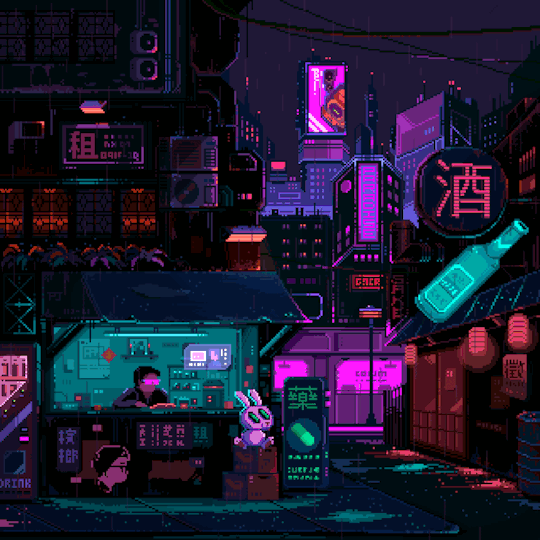
❥ what i realised from observing celebrity charts, Chiron conjunct MC may bring fame but in exchange fans may know a lot about your wounded areas or generally may know a lot about the individual ( including a lot of transformative area of their lives). They become almost like a mentor in the eyes of their fans. The individual with Chiron conjunct MC may be a comfort person to a lot of people.
❥ lord of your Vedic 5th bouse determines how you'll act when becoming a parent.
For example, in 2nd house, individual may gain wealth through having children. Children may be valued, may find sudden fulfilment through becoming a parent.
In 6th house, may bring a lot of health issues to the parent or the child as it is seen as a hard house in Vedic astrology. It can bring unexpected bills to the parent after having children also.
In 12th house, may bring mental health issues to the parent or child, also isolation can be a big issue here. Is also seen as a difficult house to have 5th lord in. May be some confusion when communicating to the child.
❥ Planets near the MC line (if no planets check the IC) can determine and help to figure what career path may be best for you.
-For example, individuals with Moon near the MC line (or IC) can be seen working as a marine, cooks, nurses, working with women, travelling (flight attendant), restaurants.
-With Venus near the MC line, something to do with beauty, music, entertainment, hotels, luxuries, art, pleasures.
-Mars near MC line may suggest working with metal, construction, police, surgeons, engineers, vehicles, a lot of energy, weapons, soldiers.
❥ If no planets near MC or IC line in natal chart, observe where there is a cluster in a particular house with multiple of planets.
-For example, if most planets are in fifth house, expect your work to do something with politics, religious rituals, entertainment, authorship, stockbrokers.
-Planets clustered in 11th house, individuals may work as accountants, in group work, trade and business, financial institution.
-In first, may be self employed, working with the body(like gym, health club, model etc.) politics, publicity.
❥ ALSOOO. The sign in which the cluster of planets are occurring at may also be significant.
-For example, lots of planets in libra, may suggest jobs to do with artists, fashion, advertising, interior design, receptionists, judges, cosmetics, prostitutes.
-Multiple planets in the sign of Scorpio, may relate to drugs, chemicals, scientists, liquids, doctors, nurses, police, occult, insurance.
-In Capricorn, may manifest mining, raw materials, lumber, extraction and processing.
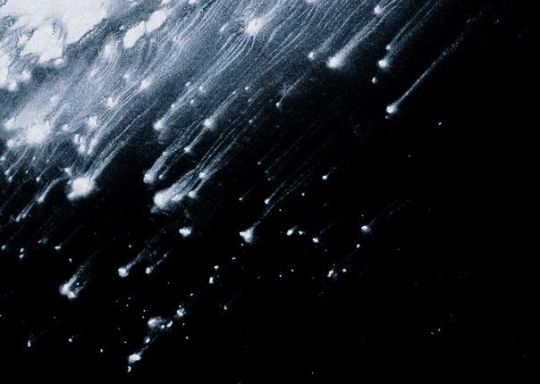

images are not mine
❥ Mars in 7th house individuals loveee to argue, they find it really entertaining.
❥ moon in Scorpio individuals tend to have a missing relationship with masculine figures. its more of an on and off relationship.
❥ what i have learned from Vedic astrology is that planets have cast spell aspects.
-For example Saturn has three aspects and they are 3rd, 7th and 10th house away from itself.
-So say you have saturn in the 5th house. saturn will also have influence on the 7th, 11th and 2nd house in your chart. so if you are studying saturn in your chart, these aspects will also be important.
❥ Virgo placements like to touch but don't necessarily liked to be touched by other people. For example, they might love to massage your head with their fingers or like to carefully stroke your palm and so on.
❥ so saturn rules restrictions, limitations, longevity and so on. so what house saturn is in will determine what will take longer for you to master in your life.
-For example, saturn in 10th house individuals may struggle to find a job at a young age.
-saturn in 7th house people may have difficulty with relationships and may not date until they actually get married.
-saturn in 11th house, this may bring tension and problems relating to social groups and friends. the individual may have difficulty with friendships and may be unfamiliar with big group setting.
⤷ don't forget that overtime saturn matures in your chart and brings LONGEVITY and success in that house its in. Of course aspects are really important as well.

That is it everyonee!! ❣
I hope you enjoyed this post. 🌠
Thank you for reading and once again don't be shy to give feedback as i would really appreciate it. 🌝
#astro notes#astro placements#astrology#sidereal astrology#astrology community#astrology degrees#celebrity astrology#kpop astrology#vedic astro notes#vedic astrology#astrology synastry#astro community#12th house#astrology observations#astro observations
627 notes
·
View notes
Text
Celebrating a lasting legacy for ocean exploration! 🎉
From discovering new species of deep-sea jellyfish to revealing the intricate connections between fish migration and the carbon cycle, the Monterey Bay Aquarium Research Institute’s (MBARI) contributions have been invaluable in advancing marine science and engineering to understand our changing ocean.
Since it was founded in 1987 by David Packard, MBARI has remained an institution that is core to the David and Lucile Packard Foundation’s legacy. It was born from David’s belief that addressing the unique challenges of ocean exploration required a new type of research institute—one that was independent in spirit and collaborative by design.
Dive in and explore MBARI’s innovation beneath the waves and inspiration on the shore. 🌊🦑 #Packard60
98 notes
·
View notes
Text
RTA, Harry's problem re: the Tillman ESPY backlash (and everything else as well) is that he's a British royal - the most entitled of entitled within the British aristocracy - who is now living in the egalitarian, (mostly) meritocratic US, and he just doesn't "get it." He'll never get it. He's a born-and-bred classist snob who will never understand American meritocracy and culture, and that definitely includes American military culture. Unlike his admission to Sandhurst solely because his granny was the Queen, there is no way that H ever would have been admitted to an elite, super-competitive American military academy (Annapolis/Navy/Marines, West Point/Army, the Air Force Academy/Air Force)! He didn't have the entrance grades, and he certainly would have failed the academically rigorous math/science/engineering/history curricula required for graduation as a commissioned officer from these institutions. Nor would he have been coddled during combat deployment, as he was by the British Army in Afghanistan (for his all-of-10-weeks deployments). Hero Harry was telling on himself, and his complete lack of combat experience, when he explained that the first wounded soldier he ever encountered was on his flight home from Afghanistan, and that's what inspired him to "found" Invictus. He can try to glom himself onto the US military and "Hero Harry" himself in the American media all he wants, but the American public isn't buying it/him.
(PS: This is not to say that all BRF, by virtue of their aristocratic positions, are entitled snobs. William for sure "gets it" (egalitarianism and meritocratic achievement), as do Catherine, Edward, Sophie, Zara (cough *Olympic medalist* cough), and others.)
***
Old ask from July 8th
61 notes
·
View notes
Note
Hey my dear mutual! Another super stupid and weird request coming, so, please, feel totally free to ignore completely if you want, really. So, let's say instead of a criminal organization, the Akatsuki are actually a lab team. Which would be their roles, their work focus or their research topics? How would they behave at work with each other or, I don't know, whatever you can think of. Inspired by your agar plates post, by the way, hahahaha
Hello Sasuke, my dear. Don't call your asks weird, I love how creative they are! If anyone wants to write a fic about this please TAG me!
Big thanks to @the-real-sasuke-uchiha for requesting!
The Akatsuki in a modern research lab AU
Akatsuki Labs, Inc. No one knows what they're actually researching, and how they get their funding, however everyone hires them, they're incredibly popular with institutions and businesses alike...
Deidara is a lab rookie who is still at the beginning of his study. He went to a scientific high school and an absolute ace at chemistry. Besides studying chemistry, his other major is pyrotechnical engineering. He blows shit up on the regular and even adds copper sulphate to fires when he is the one supposed to put them out. He frequently steals minerals from the lab to use them for his pottery projects. And yes, he knows how to make meth.
Hidan is on his way to become a neurologist. He is fascinated by the way the nervous system works (especially while processing pain) and has the ego of a neurosurgeon twice his age. However he is regularly asked for a second opinion because he knows his shit. He's pretty popular with the ladies due to his confidence, however many of them are freaked out when they find out what a huge masochist he is.
I've never seen Itachi as a huge stem guy, but I've actually had a discussion about this with my dear moots @pet-plasma-bubble and @suki91 and came to the conclusion that he's either a plant biologist or studies medicine because he's one of these kids with a chronic and/or underdiagnosed illness going into medicine to make a change. Plant biologist!Itachi regularly talks to his plants when no one is looking and he gives them names as well. He doesn't really care much for the actual lab work and prefers to take care of the plants in the different lab greenhouses. Med student!Itachi is one of these anatomy girlies who draw their stuff in fancy colors and actually enjoy studying human anatomy.
Kakuzu is a senior scientist/professor who initially studied pharmacology/pharmacy to save many lives and prolong the lives of millions, but eventually got disillusioned and sold his soul to the pharma industry. He should technically be retired now, but he joined the Akatsuki labs inc to make some money on the side.
Kisame started out as a marine biologist specializing in shark research, however, seeing these beautiful, innocent creatures get bastardized by Hollywood and pollution made him apply to Akatsuki labs inc to help find solutions to the current crises caused by humanity. During his free time, he volunteers in a dolphin rehabilitation center.
Konan is the cofounder of Akatsuki labs inc, everyone respects her and even looks up to her. Once a brilliant scientist in the field of engineering, she got tired of how male dominated it was and how her male colleagues kept getting the credit for her ideas. She frequently holds lab courses for young girls interested going into the scientific field.
Nagato is the Akatsuki labs founder, and rarely seen in the lab. He has made himself a name in the field of robotics by inventing the Shurado robotics system which helps millions of automated machines run to this day. Rarely seen in the lab, he communicated with his employees via his Pain Alias Email. though to be fair, Konan writes most of these emails for him; she's the only one regularly talking to him face-to-face.
Orochimaru is a geneticist and biochemist, his focus being finding ways to avoid cellular decay, as well as the human genome and anti aging research. His parents are academics as well and he lived up to their expectations to the fullest. He has his own skincare formula which keeps him looking snatched at all times. Given the rumors about several scientific ethical code violations, everyone is kinda scared of him except for his personal lab tech, Kabuto.
Sasori is a renowed mortician who's also very interested in histology. His preparation techniques are unmatched and he even invented new preparation- and histological staining methods, which are called "Red Sand" and "Red Technique", respectively. He often gets into fights with Kakuzu about his microtome collection being unnecessarily expensive.
Tobi is the Akatsuki labs CEO cosplaying as a clueless intern that always steals from the candy bowl in the waiting room. In reality, he has a PHD in physics, his thesis being about rifts in space time and interdimensional interactions, however all of his papers are published under an alias. He has a soft spot for Deidara and refuses to fire him despite the latter's frequent "accidents".
Zetsu is a biological anthropologist fascinated by human evolution and human behavior. Some think even his colleagues are subjects of his studies. Some people say he's two-faced, but he is very chatty and inquisitive most of the time. He volunteered to have Itachi's venus fly traps in his office and can sometimes be seen feeding them dead flies or mosquitoes.
#naruto#naruto shippuden#naruto headcanons#naruto scenarios#naruto au#akatsuki#akatsuki headcanons#naruto modern au#deidara headcanons#hidan headcanons#itachi headcanons#kakuzu headcanons#kisame headcanons#konan headcanons#nagato headcanons#orochimaru headcanons#sasori headcanons#obito headcanons#tobi headcanons#zetsu headcanons#naruto fanfiction#naruto imagines
85 notes
·
View notes
Text
Just shy of half past 1 in the morning, the MV Dali, a giant container ship, was sailing gently out of the port of Baltimore when something went terribly wrong. Suddenly, lights all over the 300-meter-long vessel went out. They flicked on again a moment later, but the ship then began to veer to the right, toward one of the massive pylon-like supports on the Francis Scott Key truss bridge—a huge mass of steel and concrete that spans the Patapsco River.
The Dali’s lights went out a second time. Then the impact came. The ship plowed into the support, with large sections of the bridge’s main truss section instantly snapping apart and falling into the river. It took just 20 seconds or so for the structure to come down.
Now, a major US port is in disarray, and several people who were working on the bridge at the time of its collapse are missing. A rescue operation is underway. President Biden has called the disaster a “terrible accident.” Ship traffic is currently stuck on either side of the crash site, and a major roadway through Baltimore has been cut off.
“It’s a dreadful tragedy and something you hope never to see,” says David Knight, a bridge expert and specialist adviser to the UK’s Institution of Civil Engineers. But commenting on footage of the bridge collapse, he says he is not surprised by the manner in which it crumpled.
Large steel structures may seem invulnerable, but steel, explains Knight, is relatively lightweight for its size. As soon as it is pushed or pulled the wrong way with enough force, it can fold like paper. In this case, the Francis Scott Key Bridge was a “continuous,” or unjointed, bridge that had a 366-meter-long central truss section. (Truss bridges use steel beams, arranged in triangular shapes, to support their load.) The central truss was made up of three horizontal stretches, known as spans, with two sets of supports holding these above the water. It was the third-largest structure of its kind in the world.
“When you take a support away, there is very little in the way of robustness,” says Knight. “It will drag down, as we saw, all three spans.” The separate approach spans remain standing. There is nothing in Knight’s view that immediately suggests any structural problem with the bridge. An engineering firm, Hardesty & Hanover, confirmed to WIRED that it performed an inspection of the bridge in 2019, and that other inspections have been carried out since, but did not provide any additional details on the state of the structure. WIRED has approached H&H for further comment. In June last year, the US Federal Highway Administration rated the condition of the bridge as satisfactory.
The immense force of the container ship impact should not be underestimated, adds Knight. Such vessels require a lot of power and time—perhaps many minutes—to come to a complete stop. The Francis Scott Key Bridge was completed in 1977. In more recent decades, bridge engineers have commonly incorporated defenses to reduce the potential damage by ship strikes when bridges are erected in similar locations, Knight says. These include hydraulic barriers and additional concrete around the base of bridge supports, for instance. However, even with such fortifications in place, heavy strikes can still cause devastating damage.
It is not clear why lights turned off and on again on the Dali, a Singapore-flagged ship built in 2015. “That is an indication of a massive problem,” says Salvatore Mercogliano, a maritime historian at Campbell University in North Carolina and a YouTuber who has analyzed the crash.
At the time of the accident, two pilots—mariners who board a ship to help it navigate particular stretches of water, including in and out of ports—from Baltimore were on board. The Dali was broadcasting its position publicly via the automatic identification system (AIS) and was traveling at a speed of over 8.5 knots. It then slowed to around 6 knots in the moments before the crash, according to AIS data.
Both pilots and all crew members on the Dali are accounted for. There are no reports of injuries, the ship’s management company, Synergy Group, said in a statement on March 26.
ABC News reports that the crew of the vessel made a desperate mayday call in an attempt to warn transport officials that the crash was about to occur. A report from the Cybersecurity and Infrastructure Security Agency, seen by ABC, says the Dali “lost propulsion” and that the crew were aware they had “lost control” of the ship. Maryland governor Wes Moore told reporters that, thanks to the mayday call, officials were able to stem the flow of traffic over the bridge, an intervention that he says “saved lives.”
Mercogliano says it is very difficult for ships of this size to make rapid adjustments to their trajectories. Video footage shows a sudden outpouring of smoke from the vessel’s stack, indicating a change in engine activity of some kind. What is particularly disturbing is that, in this case, the vessel ends up plowing straight into one of the key supports for the bridge, clearly off course. No information as to why this happened has become public.
Photographs of the aftermath show the bow of the ship pinned beneath fallen sections of the bridge. The anchor chain is visible, meaning that at some point the anchor was dropped, though it is not certain whether this happened before or after impact. The chain appears to be at an angle, however, which Mercogliano says could be a sign that it was dropped shortly before the crash and dragged for a brief time.
Lawyer James Turner of Quadrant Chambers in London specializes in, among other things, ship collisions. He says that there would have been no automated systems on board a merchant ship of this kind able to prevent the impact. Information from radar, AIS, and visual observations would have been available to the crew, however.
But data-collecting systems may now reveal exactly what happened. As on airplanes, commercial ships have data and audio recorders on the bridge, which are often a key source of information for investigators post-incident. “The master will hit a button and that ensures that the last two hours of audio recording are preserved, as well as all the data from the various parts of the ship, like the engine and steering and so on,” explains Turner. “That can be downloaded and queried.”
He adds that estimates of the ship’s speed at the time of the incident as recorded by AIS are likely “99.99 percent accurate.”
For now, the focus of responders will be on locating survivors from the fallen bridge. Two people have been rescued, one of whom is in the hospital. Six construction workers remain missing.
The disaster has come at a difficult time for shipping, with drought afflicting the Panama Canal and Houthi attacks striking multiple vessels in the Red Sea in recent months. Somali piracy is on the rise again, also. The grounding of the Ever Given in the Suez Canal is very much still within recent memory—it occurred a mere three years ago.
The Port of Baltimore insists in a statement that it has not been shut down—road vehicles are still operating within the port—however, all ship traffic in and out is suspended until further notice. AIS data reveals around a dozen commercial vessels at anchor outside the port, their entry now blocked by the stricken bridge and the Dali. It will take some time for the US Army Corps of Engineers to remove the steel pieces of the bridge, which present a significant threat to passing vessels, from the river.
“Whatever ships are in the port are now stuck,” says Mercogliano, who notes that Baltimore is an important port in terms of car deliveries and coal exports.
Overall, he argues, maritime operations are extremely safe today, though the volume and velocity of trade mean that when things go wrong it can be especially serious.
“We move goods a lot faster than ever before, and there’s very little margin for error,” he says. “When there is a mistake, the mistakes tend to be very large.”
38 notes
·
View notes
Text
A species of spider lives its entire life underwater, despite having lungs that can only breathe atmospheric oxygen. How does it do it? This spider, known as the Argyroneta aquatica, has millions of rough, water-repellent hairs that trap air around its body, creating an oxygen reservoir and acting as a barrier between the spider's lungs and the water. This thin layer of air is called a plastron and for decades, material scientists have been trying to harness its protective effects. Doing so could lead to underwater superhydrophobic surfaces able to prevent corrosion, bacterial growth, the adhesion of marine organisms, chemical fouling, and other deleterious effects of liquid on surfaces. But plastrons have proved highly unstable under water, keeping surfaces dry for only a matter of hours in the lab. Now, a team of researchers led by the Harvard John A. Paulson School of Engineering and Applied Sciences (SEAS), the Wyss Institute for Biologically Inspired Engineering at Harvard, the Friedrich-Alexander-Universität Erlangen-Nürnberg in Germany, and Aalto University in Finland have developed a superhydrophobic surface with a stable plastron that can last for months under water.
Continue Reading
101 notes
·
View notes
Text
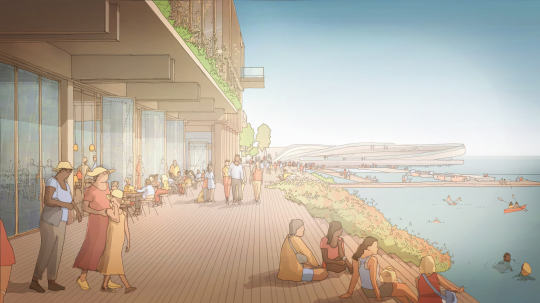
Revitalizing the ocean economy with transformative sustainability innovation in urban planning and architectural design
Image: © Haptic Architects, Oslo Works, and BOGL
A waterside scheme spanning 45,000 sqm with features including Fjordarium—an aquarium with underwater galleries capturing the fjord’s marine life and anticipating its future. The facility is part of a wider knowledge hub of workspaces for marine industry and ocean tech businesses. Haptic Architects and Oslo Works reimagine a disused parking lot as a global centre for sustainable oceanic practices.
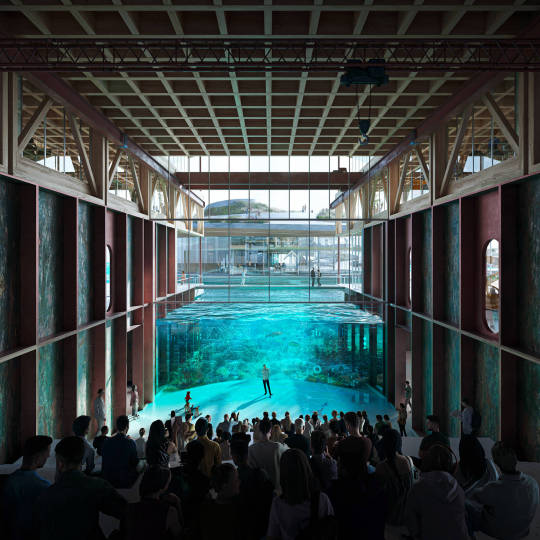
Fjordarium featuring underwater galleries that peek into the marine life of the fjord
The Fjord area is designed as the educational centre of the scheme and will house the Fjordarium. This building will provide an immersive visitor experience by offering a window directly into the fjord. The Fjordarium will encompass various facilities such as a restaurant, bar, gallery, event space, research laboratories, workspaces, and teaching rooms above and below the water level.
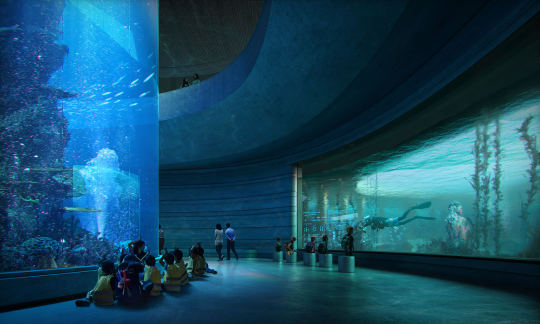
In collaboration with the Norwegian Institute for Water Research (NIVA), the design of the Fjordarium building has been created to safeguard marine biodiversity. The building, as per the design statement, will be engineered to withstand the fjord's waves and currents while maximising natural light penetration into the underwater areas. It will address the challenges and provide solutions for cleaning the heavily polluted fjord caused by agricultural waste. In partnership with We Are Human, the architects have conceived the Fjordarium as a destination that will seamlessly blend physical and virtual experiences. It will serve as a global learning platform, exploring the drivers of the new blue economy while promoting a shift towards environmental sustainability and a regenerative approach to oceans.
16 notes
·
View notes
Text
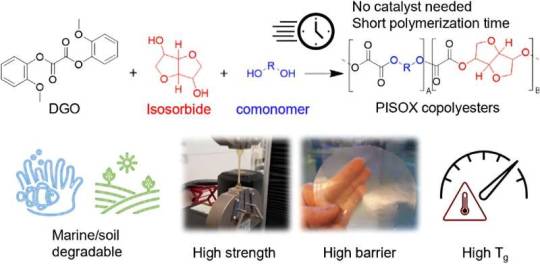
Exciting applications for marine degradable, bio- and CO2-based PISOX polymers
Researchers at the Industrial Sustainable Chemistry (ISC) group at the Van 't Hoff Institute for Molecular Sciences have developed a new class of bio- and CO2 based PISOX polymers with surprising properties and applications. In a paper published in ACS Sustainable Chemistry and Engineering, they present the novel polyesters and discuss their potential. PISOX polymers are truly unique in their combination of properties. They display high-performance characteristics, both thermally and mechanically, but even so decompose relatively easily to CO2 and biomass. For instance, under home-composting conditions in soil, PISOX degrades in just a few months. Under aqueous conditions it hydrolyzes in less than a year at 20°C, without the need for enzymes.
Read more.
17 notes
·
View notes
Text
Keren Landman, MD at Vox:
Anybody can be a part of Robert F. Kennedy Jr.’s Make America Healthy Again campaign. On his MAHA website, shoppers can buy shirts identifying themselves as a surfer, snowboarder, skier, sailor, marine, soldier, veteran, chiropractor, artist, fisherman, diver, nurse, doctor, pharmacist, paramedic, engineer, trucker, therapist, lawyer, teacher, millennial, Gen Z, Gen X, Boomer, mom, warrior mom, dog mom, or grandmother — who, like Kennedy, opposes the public health or factory farming or pharmaceutical corporate establishment.
Over the 16 months he campaigned for president, and ever since he quit to endorse President-elect Donald Trump in August, Kennedy has been making strange bedfellows in a divided nation. Voters across the partisan spectrum can find at least one thing he’s said or done that resonates with their values. Opponents of industrialized agriculture and people who want easier access to unpasteurized milk can convince themselves he’s an ally. Public health authorities and fact-based journalists may clash with Kennedy for his inaccurate representations of biomedical science, but many Americans sympathize with his comments on the drug industry, and a growing number share his negative views on vaccine mandates. Trump’s decision to pick Kennedy to lead the Department of Health and Human Services wasn’t a conventional choice. Kennedy represents a movement that has long been outside the mainstream but now finds itself in the halls of power. Soon after Kennedy traded his endorsement for an appointment by then-candidate Trump in August, his platform took on a more Trumpian branding: Make America Healthy Again, often shortened to MAHA.
But what does that really mean? What would the consequences be for people’s health? By articulating a few big, noble goals in alluringly plain language — without getting into the weeds about how to achieve them — MAHA has drawn what were once distinct causes together under one banner. But it’s in between the lines where its dangers lie: MAHA’s calculated omissions allow people to project their own priorities onto the platform, without having to think too hard about the trade-offs.
The historical origins of Make America Healthy Again
From the beginning, Kennedy’s career has blended a connection to the counterculture with his august surname and a professed commitment to noble goals. During court-ordered community service for a drug offense in the early ’80s, he wound up renovating a building owned by the Open Space Institute, a land preservation organization. The building was later taken over by Hudson Riverkeeper, a group dedicated to rehabilitating the befouled Hudson River, and he embraced the cause: After his admission to the bar in 1985, he took on multiple corporate polluters in high-profile cases over the next few decades as senior attorney for the Natural Resources Defense Council. He styled himself as a crusader for the Earth, and so did the media; in 1999, Time magazine named him a Hero for the Planet.
In the early 2000s, Kennedy got interested in thimerosal, a mercury-based preservative then often used to produce vaccines. American anti-vaccination advocates, primed to fear vaccines due to a now-discredited 1998 publication by British scientist Andrew Wakefield, had seized on bungled communications about the ingredient’s safety. Despite the weight of the evidence confirming vaccine safety and the immense global benefits of childhood vaccinations, it became Kennedy’s most important cause. He spent the next two decades at the helm of Children’s Health Defense, one of the leading organizations in spreading anti-vaccination messages.
It represented a break from his activism on behalf of a more conventional and scientifically sound cause to one on the biomedical fringes. Environmentalism “is a shockingly mainstream movement overall” rooted in a faith in science, expertise, and a belief in an active federal government that can implement solutions, says Brian Drake, a historian of environmental movements at the University of Georgia. In contrast, the anti-vaccination movement is grounded in a distrust of science and government, and relies on deliberate misreadings of scientific evidence to support its positions.
But there is a common thread: Both movements appeal to people with an intense distrust of authority, whether government, scientific, or corporate. People with these values have historically used environmental causes as a vehicle to express them, Drake says. For example, when anti-fluoridation advocates gained momentum in the 1950s and 1960s, their most prominent leaders in the US were anti-communists and organic farmers. For those environmentalists who like Kennedy, there is similarly “a real emphasis on bodily integrity, fears of poisons getting into your body,” Drake says. “There’s a really strong individualistic strain to it.” [..]
The Kennedy supporters Buck has spoken with often tell her they’re “fed up” with mainstream approaches to climate action like carbon offsets and alternative energy sources. Rather than push for scalable big-government solutions like investments in renewable energy, she says, people in this subgroup favor more individualistic approaches that don’t restrict their freedom, like strengthening regenerative agriculture for small local farms. Kennedy has done the same. In the mid-2000s, he opposed an effort to build a wind farm off the coast of Cape Cod, framing the issue as a clash between corporations and local economies. During the 2024 campaign, he said soil regeneration and clean water are higher on the list of his environmental priorities than, for example, investments in carbon capture technologies that literally suck carbon dioxide out of the air. (Kennedy left the Natural Resources Defense Council in 2014; his former colleagues there say his anti-science views became incompatible with the organization’s work.)
Vaccine deniers and RFK Jr.-style environmentalists are highly skeptical of corporate power and the scientists they perceive to be in collusion with those nefarious entities. By 2015, historically left-leaning anti-vaxxers were using social media to grow their movement across political and special interest lines. The pandemic further galvanized their efforts and brought in new adherents: Conservatives fearful of government overreach found common cause with vaccine deniers, says Sara Gorman, a public health researcher and author whose latest book is about medical distrust and conspiracy theories. A generation of right-wing politicians and media commentators had primed them to be deeply skeptical of the so-called liberal bias of conventional expertise and academia.
What is MAHA, and who’s behind it?
Kennedy has been articulating elements of what eventually became the MAHA platform for years. His agenda acquired shades of MAGA only recently, when he effectively dropped his doomed presidential bid in exchange for influence over Trump’s health care agenda and over the president-elect himself. The first murmurs of MAHA, the brand, started in early September with an op-ed Kennedy authored in the Wall Street Journal. The effort eventually articulated five key aims:
Combat America’s chronic disease epidemic — especially cancer, diabetes, and heart disease — by tackling its root causes: poor diet, environmental toxins, and inadequate health care.
Promote regenerative agriculture, an organic-style farming approach that promises to slash agricultural carbon emissions and conserve nature while reducing chemical use, with the aim of producing healthier food.
Restore natural ecosystems to benefit human and animal health and mitigate the environmental harms of US industry and agriculture.
Reduce corporate influence in government, especially in its public health and environmental agencies.
Remove chemicals and toxins from the country’s food, water, and air.
On the surface, these priorities don’t look that different from those of the American Public Health Association or the Center for Science in the Public Interest. They share elements of the One Health approach to ecosystem health embraced by leading health authorities worldwide. [...] Siblings Calley and Casey Means have also shaped the MAHA plan. Casey is a Stanford-educated surgeon turned wellness influencer, while Calley was at one point a political insider interning for John McCain’s presidential campaign and lobbying Congress on behalf of the food and pharmaceutical industries. Now authors of a bestselling book on metabolism and health, they bring a deep distrust of those industries and of the medical establishment to Kennedy’s coalition, as well as an insider’s understanding of how they work. Del Bigtree, founder of the Informed Consent Action Network, a prominent anti-vaccination organization, is the MAHA PAC’s CEO, and the group’s social media director previously worked closely with Aubrey Marcus, a podcaster and founder of the Joe Rogan-endorsed fitness and supplement brand Onnit.
[...]
Who is MAHA for?
Taken together, these apostles display impressive credentials. But they are also fluent in the right-leaning influencer-slash-podcaster subculture that has grown around “healthy” eating and exercising; Kennedy himself has gone viral for his weightlifting clips. This movement has one distinguishing feature that unites its disparate threads: People who go from curious to supportive of MAHA, whatever its specific draw to them is, also embrace an intense individualism combined with a “really knee-jerk, angry anti-elitism,” Drake says.
After reciting a falsehood about abortion to a Washington Post reporter — that it’s “never medically necessary to save the life of the mother” — conservative wellness influencer and MAHA stan Alex Clark summarized the ethos: “I know you’ll cite experts who tell me I’m wrong about this, but this is my view.”
Not all vaccine-hesitant people fit this description. But many of those who are suspicious of vaccines on ideological grounds do, and Kennedy’s work resonates with them. Moms are among those drawn to his promise to hold accountable American health care and the federal agencies that regulate it: American mothers’ skepticism about vaccinating their own children is associated with having their own negative experiences in health care, and more than half of Americans report encounters with health care providers bad enough to undermine their trust. Kennedy’s anti-vaccine campaign has coincided with a rise in anti-vaccine attitudes among the US public over the last few decades. More parents are opting out of giving their children vaccinations recommended by the Centers for Disease Control and Prevention: Over the last decade, the percentage of kindergartners who hadn’t received routine immunizations increased by 2 to 3 percent. In more than three-quarters of states, measles immunization rates were below the 95 percent coverage threshold needed to prevent outbreaks in the event of a school-based exposure.
Kennedy also appeals to people who broadly distrust government and to “double-haters” — those who think institutions and both mainstream political parties need to be dismantled and either rebuilt or replaced. Despite his lifetime affiliation with the Democratic Party, Kennedy styles himself as a bridger of partisan divides: An early graphic on his now-revamped website read, “Left isn’t better. Right isn’t better. Better is better.” Some of his politically unaffiliated supporters see themselves as outsiders whose skepticism was underappreciated by big-party candidates, and whose perspectives are maligned by mainstream media.
Vox takes a look at the MAHA movement and how it appeals to the low-trust and conspiratorially-minded people.
#MAHA#Make America Health Again#Robert F. Kennedy Jr.#HHS#Department of Health and Human Services#Donald Trump#2024 Presidential Election#2024 Elections#Children’s Health Defense#Anti Vaxxer Extremism#Anti Vaxxers#Environmentalism#Regenerative Agriculture#Food Safety#Calley Means#Casey Means#Del Bigtree#Alex Clark
4 notes
·
View notes